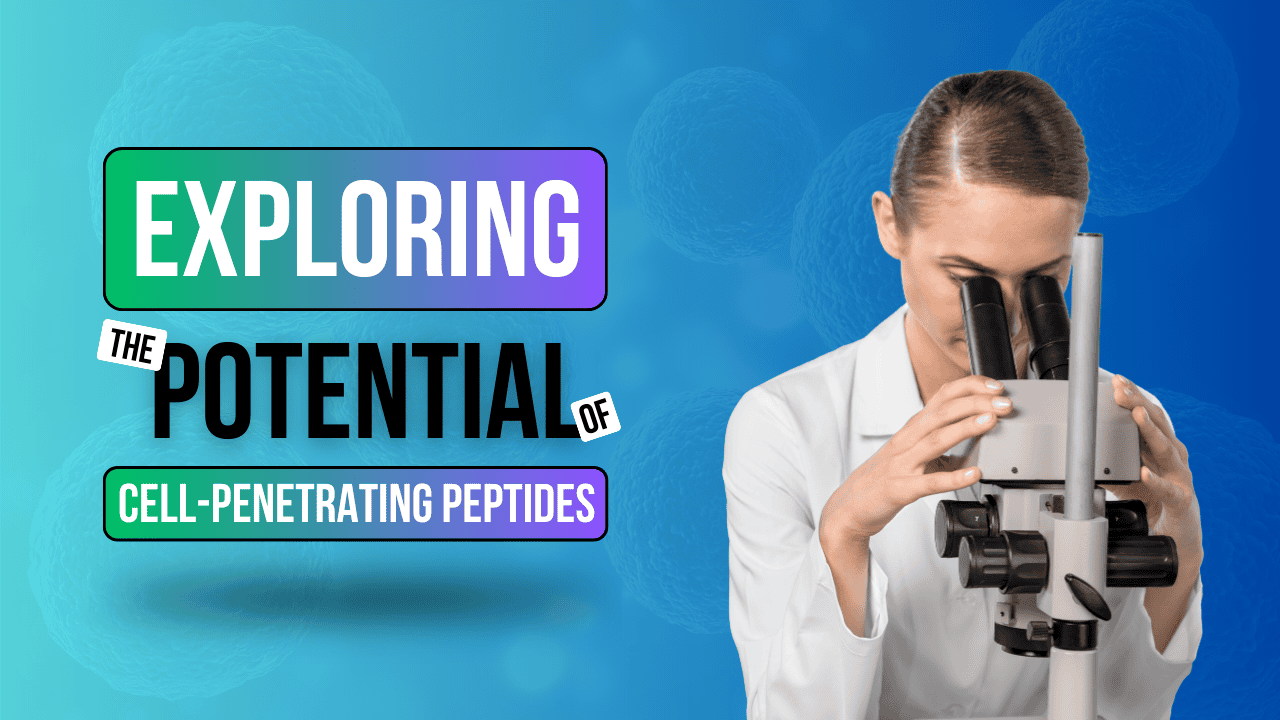

The field of peptidomimetics is revolutionizing small molecule drug discovery and development of novel peptide inhibitors, offering unique benefits over traditional therapies.
This article delves into the advancements, mechanisms, and potential applications of peptidomimetics, providing a comprehensive overview for researchers and enthusiasts alike.
Peptidomimetics are compounds designed to mimic the biological activity of peptides while offering improved stability and pharmacokinetics. By emulating the structure and function of natural peptides, these synthetic molecules can interact with target proteins effectively.
Traditional peptides often struggle with issues like poor bioavailability and rapid degradation. Peptidomimetics, with their synthetic modifications, can overcome these limitations, making them ideal candidates for therapeutic use. This improvement is often achieved through the incorporation of non-natural amino acids or structural modifications.
Drug discovery has significantly evolved since the introduction of peptidomimetics. Originally, the focus was on peptides; however, issues with stability led scientists to peptidomimetics, which unlocked new potential in medicinal chemistry strategies and drug development.
A peptide inhibitor is a type of molecule that hinders the activity of a specific protein by binding to its active or binding site. These inhibitors are crucial in regulating biological processes and can be designed to target various diseases.
Peptide inhibitors work by mimicking the natural substrates of target proteins, thus competitively inhibiting their activity. This mechanism is essential in the design of therapeutic agents aimed at diseases where protein malfunction plays a critical role.
Peptide inhibitors offer higher specificity and affinity toward their targets compared to small molecule drugs. This specificity minimizes side effects and increases therapeutic efficacy, particularly in complex biological systems.
Drug discovery involving peptidomimetics typically follows these steps:
Peptidomimetics contribute by offering diverse scaffolds that can be fine-tuned to interact with various biological targets. Their synthetic flexibility and ability to incorporate unnatural amino acids make peptidomimetics valuable in discovering new therapeutic agents.
Despite their advantages, peptidomimetics face challenges such as synthesis complexity and predicting biological activity. Computational methods and high-throughput screening are being employed to overcome these hurdles.
Amino acids are the building blocks of peptides and peptidomimetics. The specific sequence and structure of amino acids determine the biological activity and stability of these compounds.
Accurate sequencing of amino acids is crucial in designing peptidomimetics that can effectively mimic natural peptides. The use of synthetic techniques such as solid-phase peptide synthesis enables precise control over amino acid composition.
Synthetic amino acids can enhance the stability and activity of peptidomimetics. These non-natural building blocks are used to create drug candidates with improved pharmacokinetic profiles and resistance to degradation.
The molecular structures of peptidomimetics can vary widely, but they generally include a peptide backbone with side chain modifications to enhance stability and binding affinity. These structures are carefully designed to mimic the target peptide’s shape and electronic characteristics.
Molecular modifications, such as cyclization or incorporation of unnatural amino acids, can significantly enhance the stability, specificity, and bioavailability of peptidomimetics. By optimizing these modifications, researchers can create more effective therapeutic agents.
Computational methods play a critical role in designing peptidomimetics. Techniques like molecular docking and molecular dynamics simulations help predict how peptidomimetics will interact with their target proteins, guiding the synthesis of promising candidates.
Recent developments in the field include the design of peptidomimetics with enhanced resistance to enzymatic degradation and improved bioavailability. Cutting-edge synthetic tools and techniques are driving these advancements.
Peptides and peptidomimetics are synthesized using solid-phase synthesis and other synthetic strategies. These methods enable accurate assembly of peptide sequences and incorporation of structural modifications.
Peptides and peptidomimetics have diverse applications in therapy, including cancer treatment, antimicrobial agents, and chronic disease management. Their ability to interact precisely with biological targets makes them powerful tools in modern medicine.
Cyclic peptides are peptides whose amino acid sequences form a circular structure. This conformation can increase stability and resistance to enzymatic degradation, enhancing their therapeutic potential.
Cyclic peptides are formed through chemical synthesis processes that link the terminal ends of the peptide sequence. This cyclization can be achieved through disulfide bond formation or peptide bond linkage.
Cyclic peptides show great potential in drug formularies due to their stability and ability to bind tightly to target proteins. They are being explored in various therapeutic areas, including oncology and infectious diseases.
Protease inhibitors work by blocking the activity of proteases, enzymes that break down proteins. By inhibiting these enzymes, protease inhibitors can prevent the degradation of therapeutic proteins and peptides.
Protease inhibitors are used to target diseases such as HIV/AIDS, hepatitis C, and certain types of cancer. Their ability to interfere with critical protease activity makes them effective in slowing disease progression.
Recent advances in protease inhibitor development include the design of peptidomimetic inhibitors that offer improved specificity and reduced toxicity. These developments are paving the way for more effective treatments.
Class A peptidomimetics are defined by their ability to mimic the structure and activity of natural peptides. They typically incorporate non-natural amino acids and possess enhanced stability and bioactivity.
Key examples of Class A peptidomimetics include compounds used in cancer therapy and antimicrobial treatments. These peptidomimetics have shown success in preclinical and clinical trials due to their high specificity and activity.
Advancements in Class A peptidomimetics have focused on improving synthesis methods and optimizing molecular structures. These improvements have led to more effective and resilient therapeutic agents.
A review article on peptidomimetics typically summarizes recent findings, explores current trends, and identifies future directions for research. These articles are essential for keeping the scientific community informed about advancements in the field.
Key findings in recent review articles highlight the success of peptidomimetics in overcoming challenges associated with traditional peptide therapies. These reviews underscore the potential of peptidomimetics in developing new medicines.
Review articles significantly impact research by guiding future studies, identifying gaps in knowledge, and proposing new mechanisms of action. They provide a comprehensive overview that can influence research directions and funding priorities.
Class D peptidomimetics are a novel category characterized by their unique structural modifications and enhanced therapeutic properties. They are distinguished by their synthetic complexity and high specificity.
Class D peptidomimetics hold great promise for addressing unmet medical needs. Their innovative designs can target complex biological pathways, offering potential treatments for diseases that are currently difficult to manage.
The future prospects for Class D peptidomimetics include expanded applications in personalized medicine and the development of targeted therapies. Advances in synthesis techniques and computational modeling will drive this field forward.
New peptidomimetics are designed using a combination of computational tools, molecular modeling, and structure-based design. These methods help identify key interactions between peptidomimetics and their target proteins.
Creative peptidomimetic design plays a crucial role in drug development by enabling the creation of compounds with unique properties. Innovative designs can lead to new classes of drugs with improved efficacy and safety profiles.
Success stories in peptidomimetic innovations include the development of highly potent antimicrobial and anticancer agents. These breakthroughs illustrate the transformative potential of peptidomimetics in modern medicine.
The pharmacokinetic properties of peptidomimetics include their absorption, distribution, metabolism, and excretion. These properties are optimized through molecular modifications to enhance their therapeutic potential.
Peptidomimetics can affect drug metabolism by reducing degradation and increasing bioavailability. Their stability allows for longer-lasting therapeutic effects and more predictable pharmacokinetic profiles.
Methods to improve peptidomimetic pharmacokinetics include cyclization, incorporation of unnatural amino acids, and PEGylation. These techniques enhance stability and reduce immune recognition, leading to better clinical outcomes.
Peptidomimetics are used in cancer treatment to target specific proteins involved in tumor growth and metastasis. Their high specificity and ability to modulate protein activity make them effective anticancer agents.
Case studies have shown that peptidomimetics can significantly inhibit tumor growth and improve patient outcomes. These studies highlight the potential of peptidomimetics in providing targeted cancer therapies.
The future treatment paradigms involving peptidomimetics include personalized medicine approaches, where treatments are tailored to individual genetic profiles. Advances in drug design and synthesis will drive these innovative therapies.
Non-canonical amino acids are synthetic amino acids not found in natural peptides. They can be used to introduce new properties and functionalities into peptidomimetics, enhancing their therapeutic potential.
Non-canonical amino acids are significant in peptidomimetics because they allow for the introduction of unique side chains and structural modifications. These enhancements can improve stability, binding affinity, and resistance to degradation.
Techniques for incorporating non-canonical amino acids include solid-phase peptide synthesis and genetic code expansion. These methods enable precise incorporation of synthetic amino acids into peptidomimetics.
Peptidomimetics inhibit biological targets by binding to active sites or blocking protein-protein interactions. This inhibition can prevent the function of key proteins involved in disease processes, offering therapeutic benefits.
Comparative analysis of inhibition mechanisms reveals that peptidomimetics can be tailored to target specific proteins with high precision. This versatility makes them suitable for treating a wide range of diseases.
Studying inhibitory mechanisms of peptidomimetics can be challenging due to their complex interactions and the need for detailed structural information. Advanced analytical techniques and computational modeling are essential in overcoming these challenges.
Structure-Activity Relationship (SAR) in peptidomimetics involves studying the connection between a compound’s structure and its biological activity. Understanding SAR helps in designing more effective and selective peptidomimetics.
SAR is determined through systematic modifications of the peptidomimetic structure and evaluating the resulting changes in biological activity. This process involves extensive in vitro and in vivo testing.
Understanding SAR allows researchers to optimize peptidomimetics for maximum efficacy. By identifying key structural features that enhance activity, SAR studies guide the design of more potent and selective drugs.
Biological systems recognize peptidomimetics based on their structure and functional groups. Specific interactions with target proteins determine the biological response to these compounds.
Immune responses to peptidomimetics can vary depending on their structure and composition. Incorporating non-immunogenic elements and optimizing the design can reduce the risk of adverse immune reactions.
Strategies to reduce the immunogenicity of peptidomimetics include using non-immunogenic scaffolds, minimizing the use of foreign amino acids, and employing PEGylation. These approaches help create safer therapeutic agents.
Methods for optimizing peptidomimetics include structure-based design, high-throughput screening, and computational modeling. These techniques help identify and refine peptidomimetics with the desired therapeutic properties.
Case studies of optimization success include the development of peptidomimetics that exhibit high selectivity and potency against their targets. These optimized compounds have progressed to clinical trials, demonstrating their therapeutic potential.
Future directions for optimization research involve integrating advanced computational techniques, exploring novel synthetic strategies, and enhancing our understanding of peptidomimetic interactions with biological targets.
Peptidomimetics combat bacterial infections by mimicking antimicrobial peptides that can disrupt bacterial membranes or inhibit essential bacterial enzymes. This mechanism offers a new approach to antibiotic therapy.
Examples of antimicrobial peptidomimetics include compounds designed to target multidrug-resistant bacteria. These peptidomimetics show promising activity in laboratory studies and hold potential for treating resistant infections.
Resistance issues with traditional antibiotics have led to an increased interest in peptidomimetics. Their unique mechanisms of action and ability to evade bacterial resistance mechanisms make them valuable in combating infections.
Cyclic peptides show high therapeutic potential due to their stability, resistance to proteolytic degradation, and strong binding affinity to target proteins. These properties make them attractive candidates for drug development.
Design principles for therapeutic cyclic peptides include ensuring the correct cyclization, optimizing the sequence for target binding, and incorporating non-natural amino acids to enhance stability and activity.
Current therapeutic cyclic peptide drugs include those used for treating cancer, metabolic disorders, and infectious diseases. These drugs demonstrate the efficacy and potential of cyclic peptides in addressing various medical conditions.
The latest trends in peptidomimetic research include exploring new scaffolds, incorporating advanced computational methods, and developing multifunctional peptidomimetics. These trends are shaping the future of therapeutic development.
Interdisciplinary approaches, combining organic chemistry, molecular biology, and computational sciences, are critical in peptidomimetic discovery. Collaboration across these fields enhances the design, synthesis, and evaluation of new compounds.
Future applications of peptidomimetics include personalized medicine, targeted cancer therapies, and novel antimicrobial agents. Advances in synthesis techniques and a deeper understanding of biological interactions will drive these applications forward.
Examples of peptidomimetics include protease inhibitors like Ritonavir and cyclic peptides like Cyclosporine. These compounds mimic natural peptides but have been modified to improve stability and specificity.
The principle of peptidomimetics is to create synthetic molecules that mimic the structure and function of natural peptides. This involves modifying peptide sequences to improve stability and bioavailability, making them ideal for therapeutic use.
Peptidomimetics are essential because they offer enhanced stability, bioavailability, and specificity compared to natural peptides. These modified peptides overcome the limitations of traditional peptide-based drugs and have great potential in drug discovery.
Peptide mimetics are synthetic molecules designed to replicate the biological activity of natural peptides while improving pharmacokinetic properties. They can be used in various therapeutic applications due to their enhanced stability and efficacy.
Peptidomimetics are important because they overcome the limitations of natural peptides, such as poor stability and rapid degradation. This makes them a powerful tool for developing effective therapeutics, including anticancer drugs and antimicrobial agents.
The primary difference is that peptides are natural biomolecules composed of amino acid sequences, while peptidomimetics are synthetic molecules designed to mimic the structure and function of peptides, often including modified amino acids for enhanced properties.
Peptidomimetics are classified based on their structural features and biological activity. They include classes like cyclic peptides, backbone-modified peptides, and side chain-modified peptides. The classification of peptidomimetics helps in understanding their therapeutic potential.
Different types of peptidomimetics include linear, cyclic, and constrained peptidomimetics. Each type has unique modifications aimed at improving stability, binding affinity, and resistance to enzymatic degradation, making them suitable for various therapeutic applications.
An example of a peptide hormone is insulin. Insulin is a protein hormone that regulates blood glucose levels and is crucial in the management of diabetes.
Dr. Gregory L. Verdine is an eminent authority in the field of peptides and peptidomimetics, with an illustrious career spanning over three decades. Professor of Chemistry at Harvard University, Dr. Verdine has deeply influenced medicinal chemistry and the development of synthetic peptides. He is renowned for his pioneering work in stabilizing alpha-helices and developing “stapled peptides,” which has significantly impacted the stability and bioavailability of peptide-based drugs.
Dr. Verdine’s notable publications include:
Dr. Verdine’s contributions are highly regarded for their scientific rigor and innovative strategies in structural modification. He has received numerous accolades, including the Merrifield Award, which underscores his authority and trustworthiness in peptide science.
Dr. Samuel J. Danishefsky is a distinguished chemist known for his extensive work in organic synthesis and the development of peptide drugs. As an Emeritus Professor at Columbia University and a key figure at the Memorial Sloan Kettering Cancer Center, Dr. Danishefsky has significantly advanced the field of medicinal chemistry. His contributions to the synthesis of complex natural products and unnatural amino acids are cornerstone achievements in peptidomimetic research.
Key publications by Dr. Danishefsky include:
Dr. Danishefsky’s work is characterized by its ingenuity and practical applications, leading to significant strides in peptide-based drug design. He has received numerous prestigious awards such as the Wolf Prize in Chemistry, affirming his expertise and trustworthy contributions to the field of synthetic peptides and medicinal chemistry.
Gokhale, A. S., & Satyanarayanajois, S. (2014). Peptides and peptidomimetics as immunomodulators. Immunotherapy, 6(6), 755–774. https://doi.org/10.2217/imt.14.37
Helton, L. G., & Kennedy, E. J. (2020). Targeting Plasmodium with constrained peptides and peptidomimetics. IUBMB Life, 72(6), 1103–1114. https://doi.org/10.1002/iub.2244
Liu, C., Voskressensky, L. G., & Van Der Eycken, E. V. (2023). Recent advances in the synthesis of peptidomimetics via UGI reactions. Chemistry – a European Journal. https://doi.org/10.1002/chem.202303597
Petri, G. L., Di Martino, S., & De Rosa, M. (2022). Peptidomimetics: An Overview of Recent Medicinal Chemistry Efforts toward the Discovery of Novel Small Molecule Inhibitors. Journal of Medicinal Chemistry, 65(11), 7438–7475. https://doi.org/10.1021/acs.jmedchem.2c00123
ALL ARTICLES AND PRODUCT INFORMATION PROVIDED ON THIS WEBSITE ARE FOR INFORMATIONAL AND EDUCATIONAL PURPOSES ONLY. The products offered on this website are intended solely for research and laboratory use. These products are not intended for human or animal consumption. They are not medicines or drugs and have not been evaluated or approved by the FDA to diagnose, treat, cure, or prevent any disease or medical condition. Any form of bodily introduction is strictly prohibited by law.








Discount Applied Successfully!
Your savings have been added to the cart.